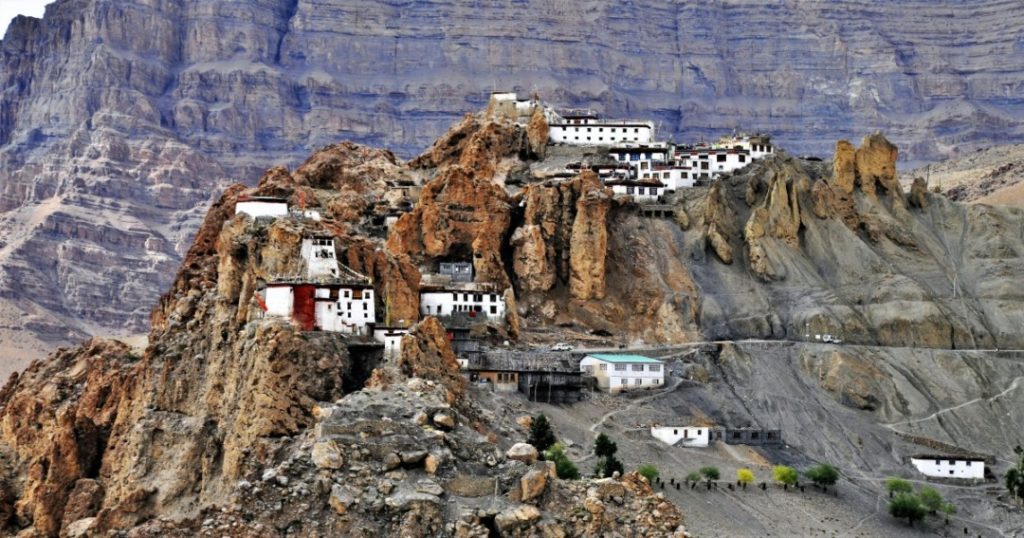
Planning a trip to Spiti Valley in June? You’re in for the ride of a lifetime. With dramatic mountains, ancient monasteries, and shimmering high-altitude lakes, a trip to Spiti Valley offers every kind of thrill and spiritual calm a traveler seeks. June is the sweet spot, roads open, snow still lingers, and the valleys bloom into their summer best.
But hold on, this isn’t just a normal Spiti Valley blog, we are featuring Explurger’s beloved @somyashekhawat to show you her Spiti travelogue- with each and every stop! Scroll on and plan your trip now!
Planning the Perfect Spiti Valley Trip in June: Everything You Need to Know
In this guide, we’ll cover everything you need to know: routes, weather, must-visit, insider tips, two perfectly planned itineraries and an extra itinerary from Explurger’s travel content creator Somya Shekhawat about her 2025 Spiti Trip, so you can stop scrolling and start packing.
What is the Best Time to Visit Spiti Valley?
May and June are considered the best time to visit Spiti Valley.
Between May and July, you can expect pleasant weather, easier acclimatization, and beautiful sights during your Spiti Valley trip. November to February offers snow in Spiti, a breathtaking sight in itself, but only for experienced travellers. However, the monsoon months of July to September are to be avoided because of torrential rains.
Why June is Perfect for a Spiti Valley Trip?
Roads Open: Both the Manali and Shimla(Kinnaur-Sangla) routes become accessible.
Kunzum Pass & Chandratal: Usually open by mid-June.
Comfortable Weather: Day temps hover around 15°C–20°C; nights are chilly.
Lush + Snow: You’ll see both snow walls and green valleys, a rare combo.
Spiti Valley Trip Itinerary: Two Ways
From pine forests in Shimla to jagged cliffs in Kinnaur and stark desert-scapes of Spiti, each region is its own planet. Expect dirt roads, occasional landslides, narrow cliff-hugging bends, and unmatched Himalayan backdrops. Once you hit Spiti, it’s all ochre mountains, river gorges, ancient monasteries, and clear skies that feel endless.
You’ve got two routes to travel to Spiti Valley:
- Via Shimla & Kinnaur (open year-round)
- Via Manali & Kunzum Pass (shuts down by late October or early November)
Pro tip from seasoned Spiti travelers: Enter via Shimla/Kinnaur to gradually acclimatise, and exit via Manali for the big views and adrenaline-packed roads.
Itinerary 1: Shimla to Manali (7-Day Spiti Circuit Trip)
Best for: Gradual altitude gain, full Spiti experience
Day 1: → Delhi → Shimla/Solan/Rampur (8–10 hrs)
Day 2: → Sangla + Chitkul (last Indian village)
Day 3: → Nako. This serene high-altitude hamlet sits beside the sparkling Nako Lake. Terrain starts to feel more stark and dramatic here.
Day 4: → Kaza (via Tabo & Dhankar monasteries)
Day 5: → Chandratal (via Kunzum Pass)
Day 6: → Manali (via Atal Tunnel)
Day 7: → Delhi
✅ Great for those who want to explore the full Spiti circuit trip with varied landscapes and fewer backtracks.
Best for: Offbeat detours + Spiti loop
Day 1: → Delhi to Manali
Day 2: → Jibhi/Shoja (forest trails, waterfalls)
Day 3: → Sangla (via Jalori Pass)
Day 4: → Chitkul + Kalpa
Day 5: → Kaza (via Tabo)
Day 6: → Explore Kaza: Key Monastery, Hikkim (world’s highest post office), Langza (the fossil village), and Komic (one of the highest inhabited villages)
Day 7: → Chandratal. Camp under a billion stars near this crescent-shaped lake.
Day 8: → Manali
Day 9: → Delhi
What to Pack for a Trip to Spiti Valley?
- Reusable water bottles and thermos
- Energy bars, nuts, and dry fruits
- Basic first-aid kit
- Documents and Permits
- Passport-size photos
- Warm layers (even in June, nights drop to 3–5°C)
- Windproof jacket, gloves, thermals
- Hiking shoes (not sneakers!)
- Sunscreen, lip balm, moisturizer
- Personal medicine & Diamox for AMS
- Toilet paper (rare in remote stays)
- Torch, power bank, and offline maps
- For those self-driving, carry a tyre inflator, puncture kit, extra coolant, and an emergency fuel can.
How much does a Spiti Valley trip cost you?
Each method of driving (public or private), and each itinerary delivers a different cost. But mostly, people have been known to cover their entire Spiti valley trip in approx 55,000/-
Want More Adventure? Try a Spiti Valley Bike Trip
A Spiti Valley bike trip in June is a dream for many, open roads, tricky hairpins, and high passes. Just ensure your bike is in top condition, carry fuel backups, and prep for river crossings between Batal and Gramphu.
If you wanna break away from the beaten track of Key, Kaza, and Chandratal. Here are spots worth squeezing into your itinerary for the Spiti Valley trip:
- Mane Villages (Yogma & Kogma): Rustic charm, lesser crowds, incredible views.
- Sopona Lake Trek: A few kilometers above Mane Yogma, this hidden alpine lake is perfect for trekkers.
- Mud Village in Pin Valley: Cozy homestays, lavender fields, and the start point of the Pin-Parvati trek.
- Kungri Monastery: Known for its tantric rituals and sword dances—an authentic cultural touchpoint.
Insider Tips for a Smooth Spiti Valley Trip
- Start early each day, the roads are rough and unpredictable.
- No ATMs after Reckong Peo/Kaza, so carry cash.
- Network: BSNL or Jio works best in Spiti.
- Fuel up at Reckong Peo or Kaza, as pumps are sparse.
- Drink water regularly to avoid altitude sickness.
Explurger Feature: Somya Shekhawat’s Spiti Valley Travelogue
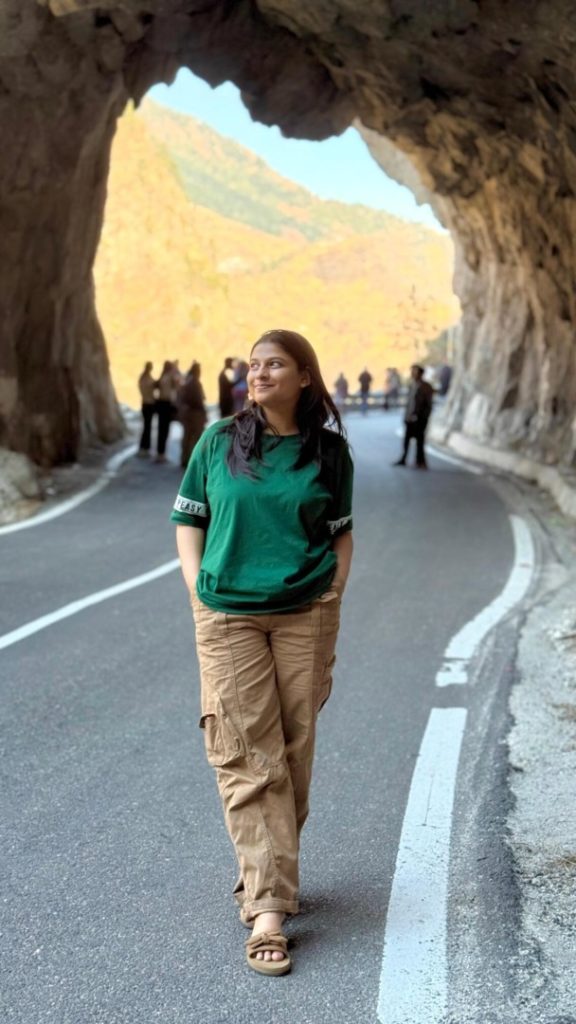
Day 1: (Delhi to Shimla & Shimla to Chitkul passing through Kinnaur Gate)
Overnight stay in Chitkul- India’s Last Village
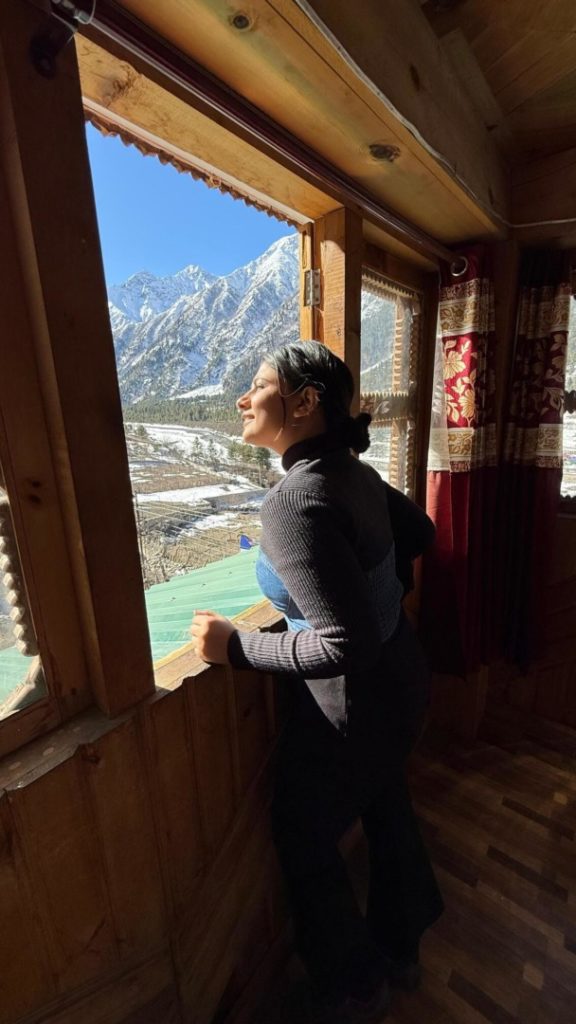
Day 2: (Chitkul to Tabo by passing through Khwaab Sangam)
Overnight Stay in Tabo
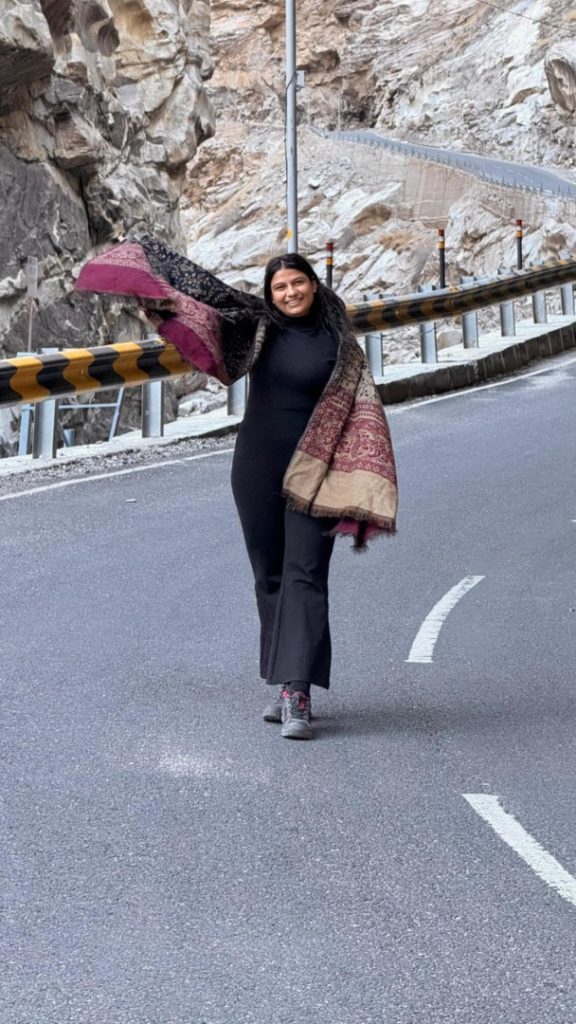
Day 3: (Tabo to Kaza: Exploring Tabo Monastery, Dhankar Monastery, Lingti Frozen Waterfall)- 2-night Stay in Kaza
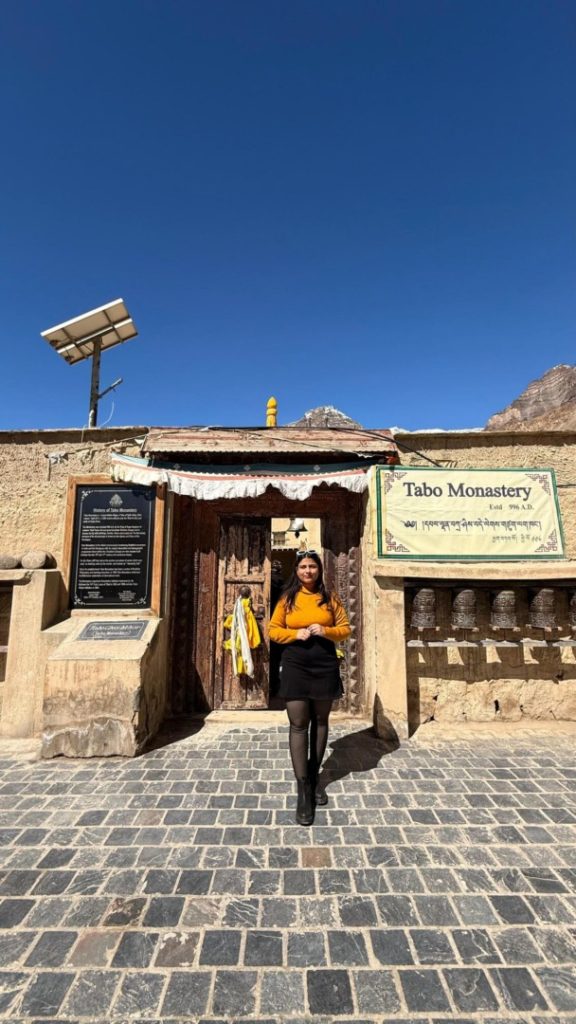
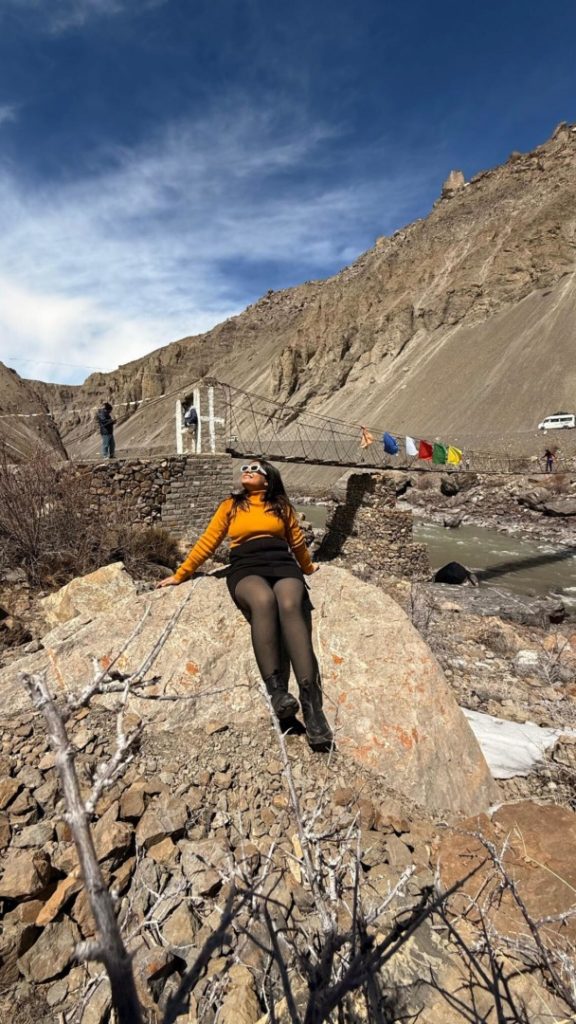
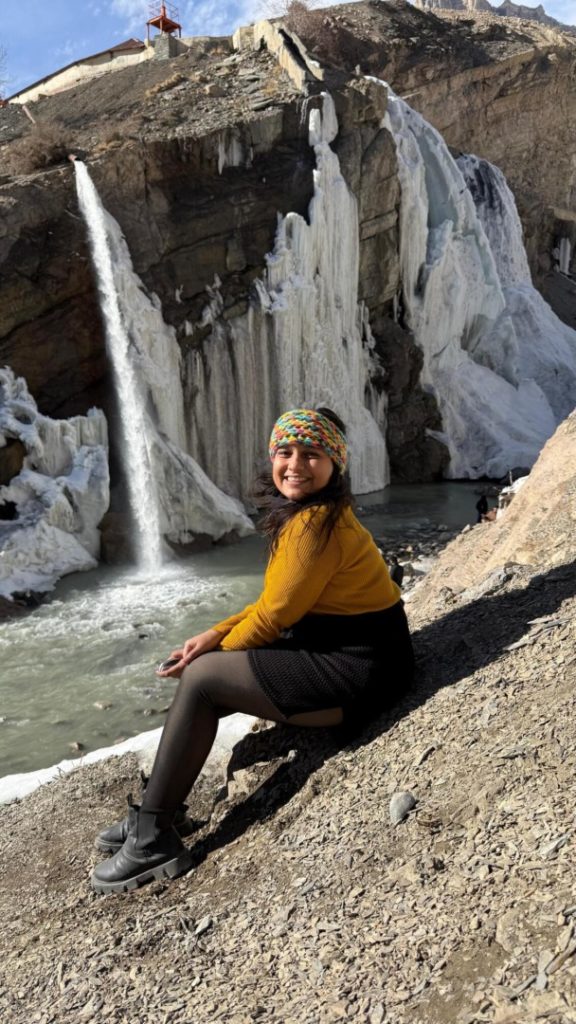
Day 4: (Kaza: Chicham Bridge, Key Monastery)
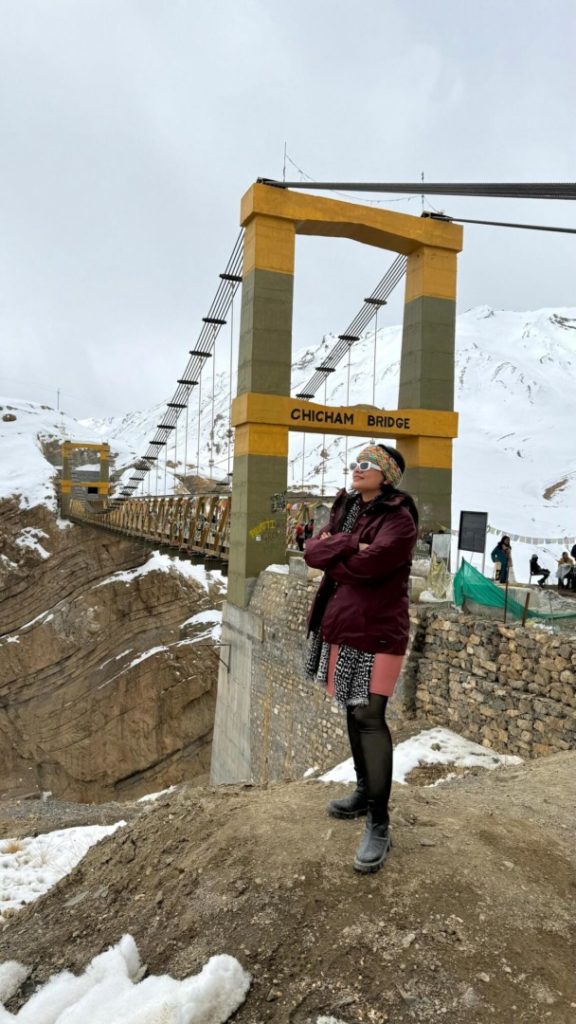
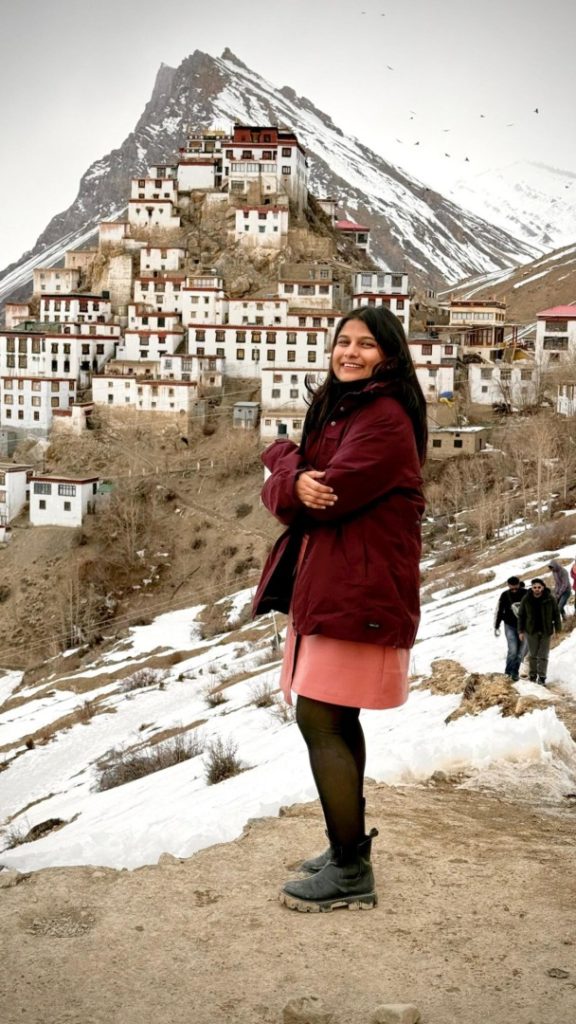
Day 5: Key Monastery, the largest monastery in Spiti Valley and the most praised religious center for lamas. It has a huge collection of ancient murals.
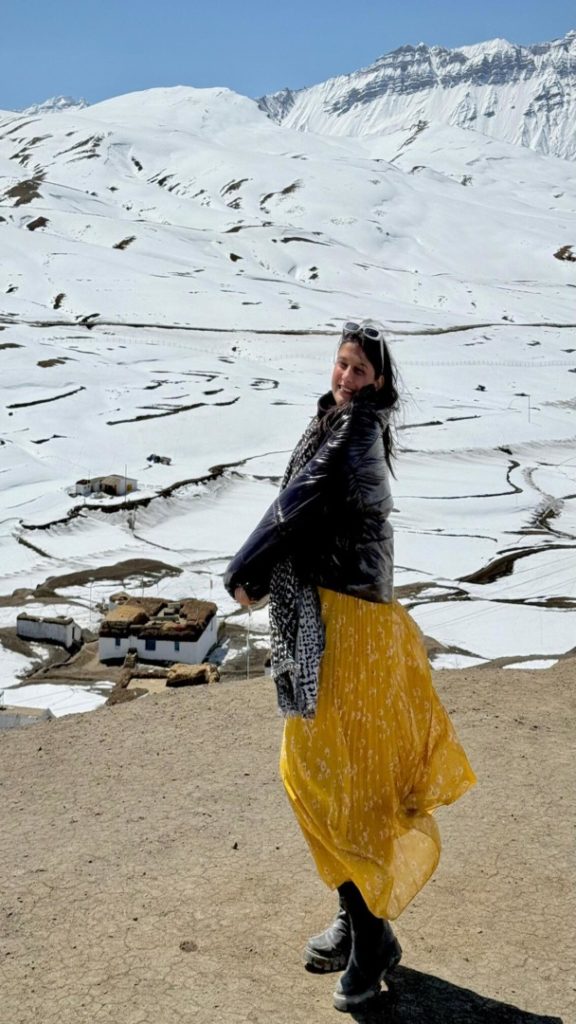
Side Quest: Langza, Hikkim and Komic
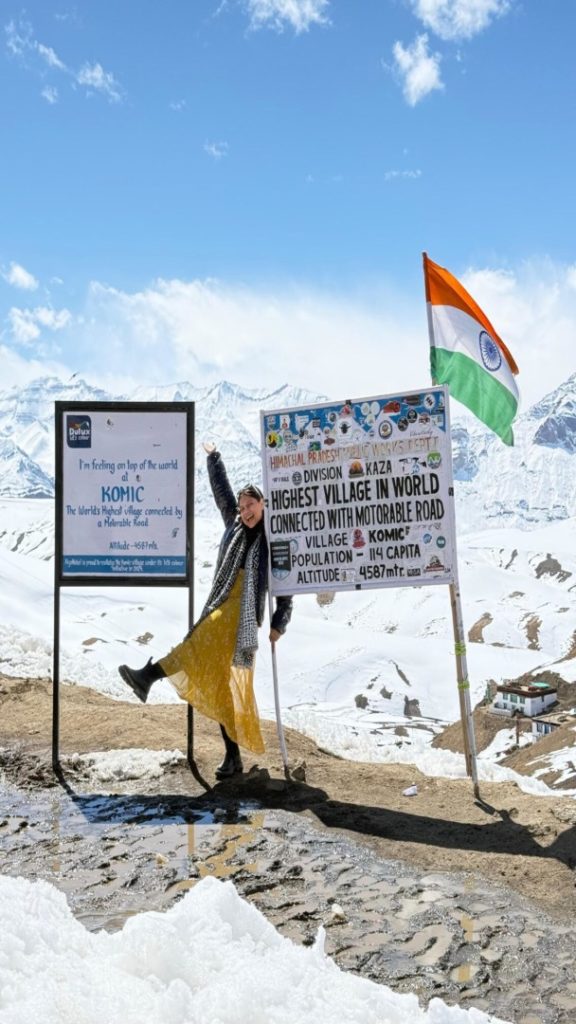
Komic: the highest village in the world
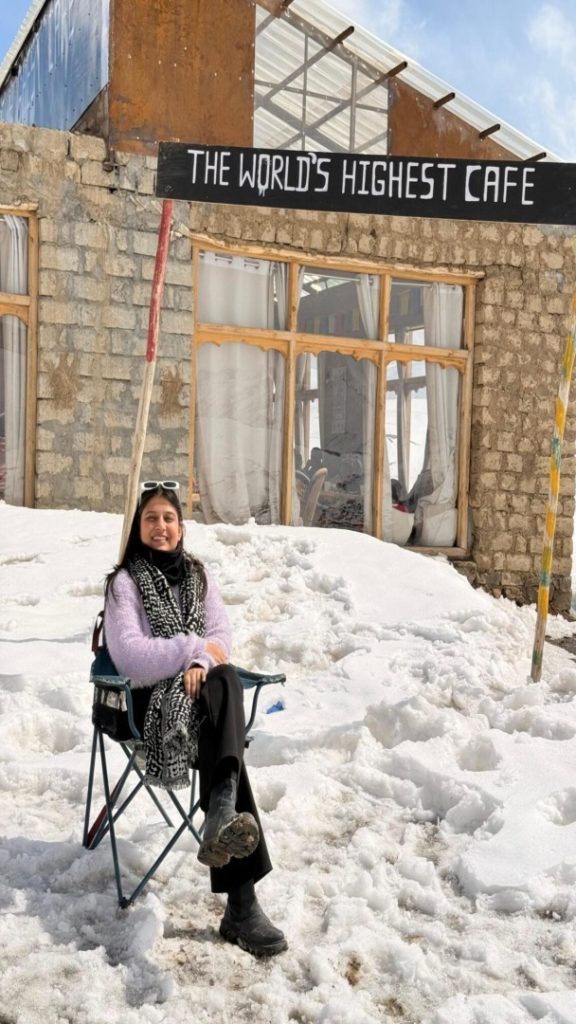
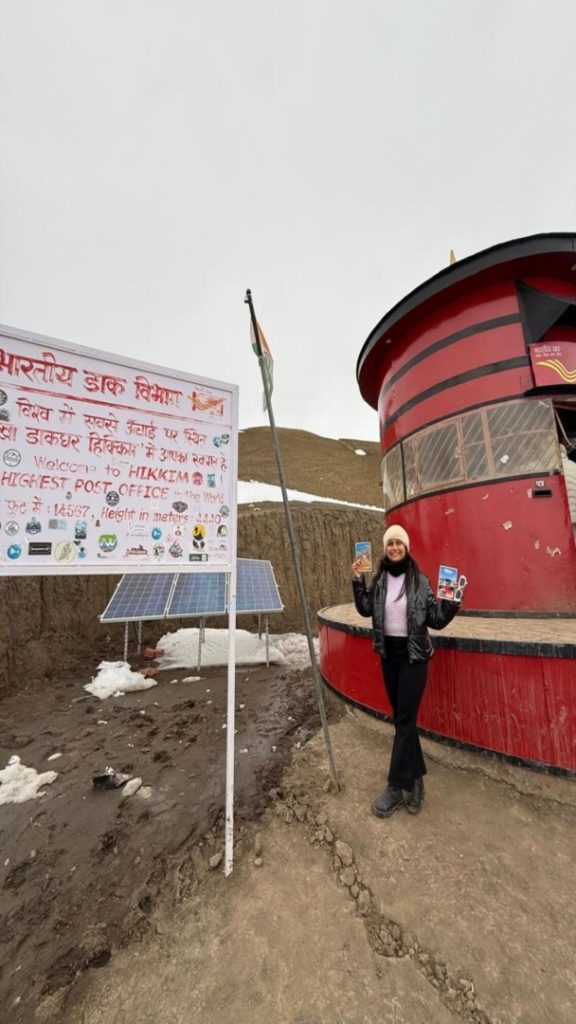
Day 6: (Kaza to Kalpa return: Stopping at Nako Frozen lake & the famous mummy Gue Monastery)
Overnight stay in Kalpa
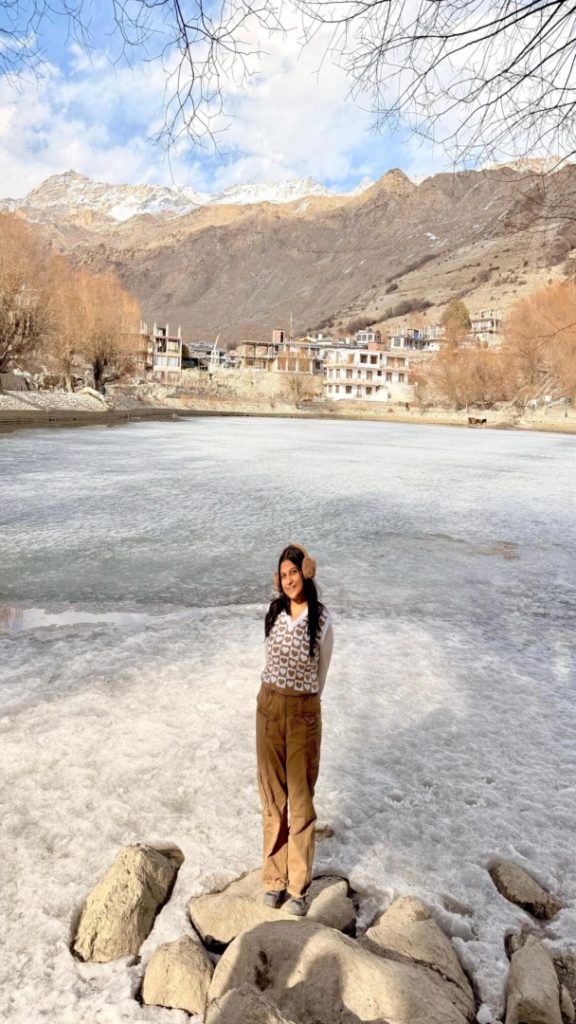
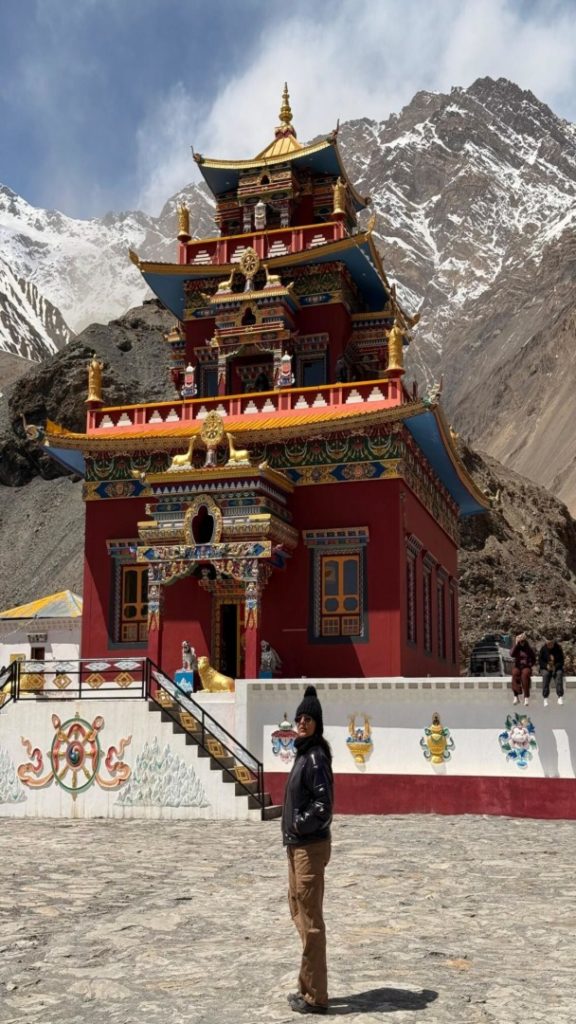
Gue Monastery- renowned for housing the naturally preserved 500-year-old mummy of Buddhist monk Sangha Tenzin, a rare example of self-mummification.
Day 7: Return to Delhi
Final Thoughts: Spiti Valley Trip in June
Whether you’re taking a full Spiti circuit trip, a quick trip to the Spiti Valley loop, or chasing high-altitude thrills on a bike trip, Spiti Valley in June offers the perfect mix of snow, sunshine, and open roads. Save this guide, follow the itinerary that fits your style, and let the Himalayas do the rest.
Faqs about Spiti Valley Trip in June
2. Which is the best month to visit Spiti Valley?
June is the best month to visit Spiti Valley. Although the terrain is beautiful in spring and winter as well.
3. Is 3 days enough for Spiti Valley?
No. If you are travelling from Delhi NCR, you need a minimum of 7 days to complete a Spiti Valley trip.
4. Is Spiti better than Ladakh?
Both have their own beauty. From a bike rider’s perspective, Spiti is more adventurous than Ladakh.
5. How difficult is Spiti Valley?
Spiti is Easy to moderate in difficulty, depending on several factors including mode of transportation, time of visit, places to cover, etc.

